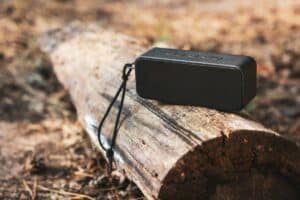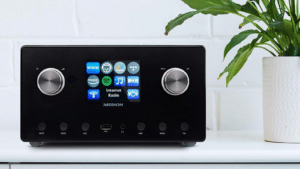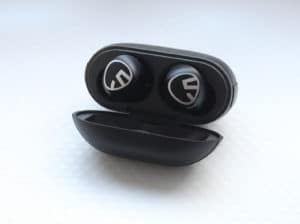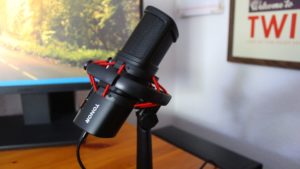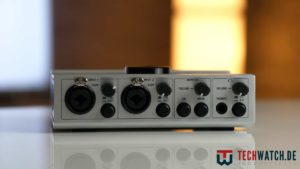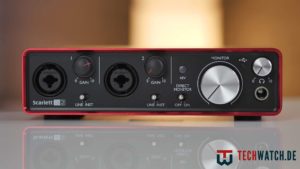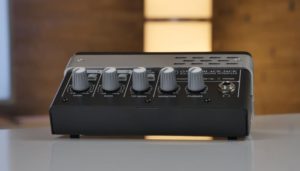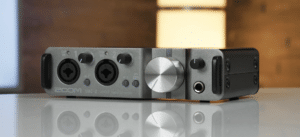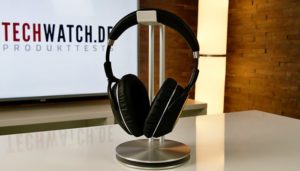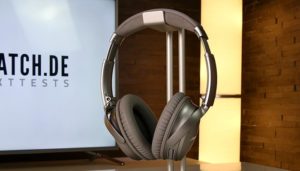USB Audio Interface Review 2023
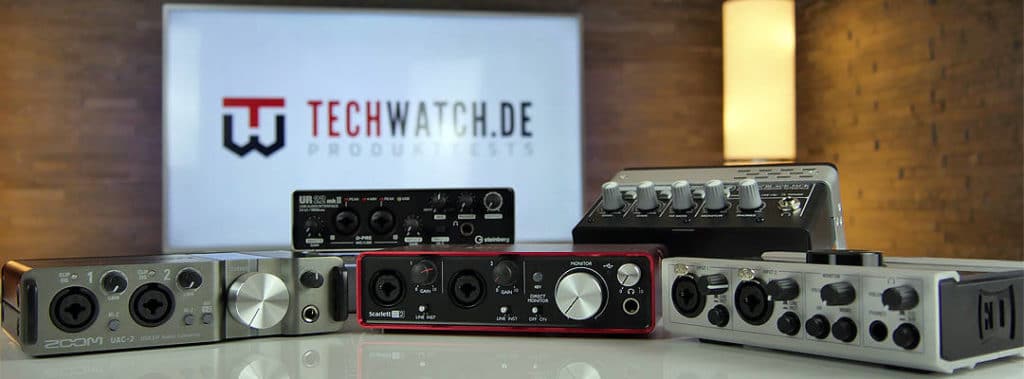
USB audio interfaces are among those absolute standard solutions for everyone involved music productions or professional recordings want to employ. In our test series, we compare five USB audio interfaces in different price ranges and from different manufacturers. In addition to well-known products such as Focusrite Scarlett 2i2 and the Steinberg UR22 MKII we also take a look at that Complete audio 6 from Native Instruments, the Mackie Onyx Blackjack and the Zoom UAC-2.
| Preview | Products | ||
|---|---|---|---|

|
Native instruments... |
|
Buy now " |

|
Steinberg UR22 MKII... |
|
Buy now " |

|
Focusrite Scarlett... |
|
Buy now " |

|
ZOOM UAC-2... |
|
Buy now " |
What is a USB audio interface?
In short: USB Audio Interfaces allow you to record instruments and microphones on your computer. They represent the interface between the PC and peripherals and combine several functions. They have both DACs (digital-to-analog converters) and ADCs (analog-to-digital converters) and are therefore capable of signals such as a voice recorded with a Microphone (analogue) into a sound file on the computer (digital). The quality of the converter is therefore essential. In addition, the biggest difference between the devices is the number and type of connections. At least one XLR connector and a pair of MIDI or line outputs are standard.
The phantom power required for some devices should not be missing either. Most audio interfaces nowadays use USB 2.0 as BUS. The transmission and processing of the signals always causes a delay, the so-called latency. Faster connections like USB 3.0 or Thunderbolt can reduce this latency. Normally, however, this is in the range of 25 to 100ms and should therefore be of little importance in most fields of application. Problems can only arise when listening to the recordings, for example by a singer. Therefore, most interfaces have direct monitoring, i.e. a latency-free headphone connection directly on the device.
The criteria of our USB audio interface test
A meaningful comparison always includes the right criteria to put the products through their paces. For the topic of USB audio interfaces, we therefore choose audio quality, workmanship, operation and price. These points are staggered as follows:
- Audio quality - 30%
- Processing, service – each 25%
- Price – 20%
The audio quality is self-explanatory in our USB audio interfaces test as the most important factor at the top. The processing includes the choice of material, dirt resistance and design. The operation criterion combines the installation, the drivers and the general use of the devices. Thanks to the general longevity of audio interfaces and relatively rare innovations, we rate the price at only 20%. Calculated over the years, the price differences are not particularly significant.
Audio quality (30%) - saves you time and nerves
As described in the previous paragraph, we value audio quality at 30%. This decision was made before we tested all products. You could call that a mistake, because: all interfaces sound very good. They sound so good that at least our USB Audio Interfaces test with the Rode NT2A did not reveal any differences.

We would attribute existing differences more to the inaccuracies in terms of volume than to the devices. There is also a pleasant equality in terms of latency. Only the Zoom UAC-2 benefits from its USB 3.0 port and offers a slightly faster connection. However, there's a reason the other products continue to rely on USB 2.0, the benefits aren't worth the higher cost.
Processing (25%) - no total failures
In terms of processing, we find that there were at least no total failures in the product field. All products are cleanly processed and rely on high-quality materials. Especially the complete sound 6 convinces with its great design. Design is a matter of taste up to a certain point, but most users should be satisfied with all products. However, it is also a fact that many products prioritize design over function. USB audio interfaces are primarily tools used in studio environments.
Large glossy areas are out of place here, unless you're looking to use the feather duster every six months. The Focusrite is recommended here Scarlet 2i2. The red aluminum hardly shows dust and dirt. The Steinberg UR22 is also still within an acceptable range. The matt black aluminum that covers 3/4 of the device is hardly susceptible to dust, and hardly anything is visible on the silver surfaces. In our overview you will find the dimensions and weights of the individual products.
[article_benchmarking]Simple operation (25%) with many a surprise
Fortunately, the installation of USB audio interfaces is not rocket science. It is primarily limited to plugging in cables and installing software. A step-by-step guide can be found in this video.
Contrary to expectations, this was not quite so easy for the majority of the products. The Mackie Onyx Blackjack does not have drivers for Windows 8 or 10, but works perfectly without them. The Steinberg UR22 MKII and the ZOOM UAC-2 do not allow any settings in the Windows sound settings and therefore produce a one-sided stereo signal in a few programs. You can find more information about this in the Video of the UR22.
If you have seen or read the Steinberg UR22 MKII review, you know that we are still awaiting a response from Steinberg on the issue. In the meantime we have received a first email in which the company apologizes for the long processing time and ... keeps us waiting without an answer.
In terms of operation, only the Complete Audio 6 from Native Instruments and the Focusrite Scarlett 2i2 remain. Both showed no driver-related problems in our test and could be easily installed. However, during our research we found out that some customers seem to have problems with the Focusrite drivers. As described, we could not find anything of this, but let it be said anyway. However, the new drivers seem to work.

Price (20%)- What costs little is also worth little, right?
As always, price is not a simple sorting of values. It's all about value for money and there are two main winners here. The Mackie Onyx Blackjack is the cheapest device in our USB Audio Interfaces comparison and offers a more than decent performance despite the missing drivers. There's an easy way to do that Cable Management, ideal for content creators who rarely change their setup. The Mackie is a bit taller than the other interfaces and, depending on the setup, may not be ideal for storage.
Only the ZOOM UAC-2 is significantly too expensive. Although it is the only device with a USB 3.0 connection and thus also benefits in terms of latency, the high price of around €200 is by no means justified. Invest €30 more here and go for the Komplete Audio 6. More connections, no problems with the settings and beware of subjectivity: better design.
For all those who are looking for the price-performance winner: Here you go. The Steinberg UR22 MKII offers a great design, great audio quality and good workmanship for around €130. It doesn't get any better than that. We keep our fingers crossed that you never have to contact support and if you do, hopefully you have time. That may sound more negative than intended, we recommend the UR22 throughout.
Conclusion on the USB audio interface comparison
Everyone can breathe a sigh of relief, nobody has failed completely. Our test winner is the Komplete Audio 6 from Native Instruments.

If you need it cheaper, you can use the Steinberg UR22 MKII. The Focusrite Scarlett 2i2 is also recommended, as is the Mackie Onyx Blackjack if more than €110 is not available. Only the ZOOM is a bit out of the ordinary and certainly not because of poor performance, only the price is too high. Each tested USB audio interface has its small advantages and disadvantages, so in the end the decision is yours. Answer the following questions to find the right product:
Is your budget tight? Do you need any other equipment such as a microphone?
- Grab the Mackie Onyx Blackjack. Audio quality is pretty much the same, invest the money saved in a microphone.
How many connections do you need? How many must be usable at the same time? Which connections do you need?
- Two connections are always available, with more the Mackie and Scarlett fall out. Only the UR22, the Komplete Audio 6 and the ZOOM UAC-2 have MIDI inputs and outputs.
Do you (for whatever reason) need the lowest possible latency?
- Then grab the ZOOM UAC-2.
Would you like to use your USB audio interface with a mobile device?
- buy this Steinberg UR22 MK2.
